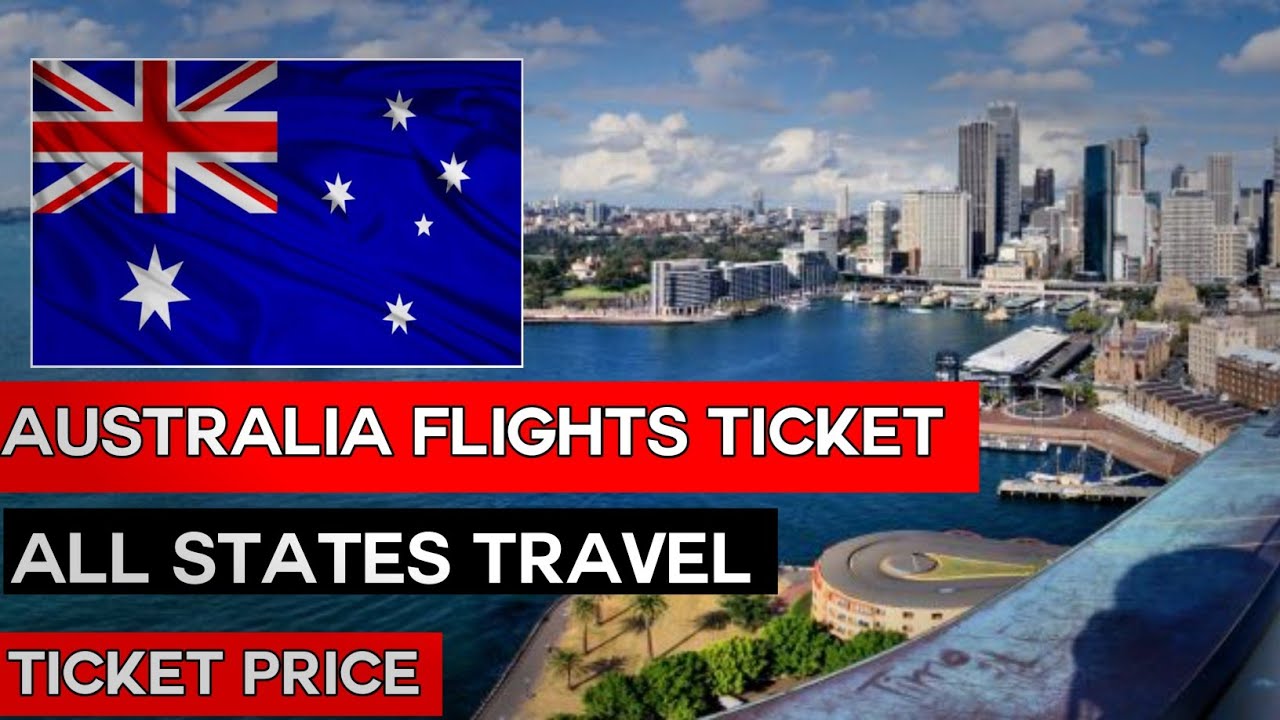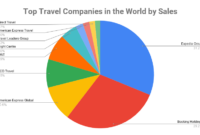Australia flight ticket bookings can seem daunting, but with the right information, planning your trip Down Under becomes significantly easier. This guide delves into various aspects of securing your Australian flight, from comparing prices and airlines to navigating visa requirements and airport procedures. We’ll explore the best ways to find affordable flights, understand baggage allowances, and ensure a smooth journey.
Understanding the nuances of flight ticket pricing, airline options, and booking processes is key to a successful trip. This comprehensive guide equips you with the knowledge and tools to confidently navigate the complexities of booking your Australian adventure. Whether you’re a seasoned traveler or a first-timer, this resource offers valuable insights and practical tips to help you plan your journey with ease and confidence.
Price Comparison Websites
Finding the best flight deals for your Australian adventure can feel overwhelming. Fortunately, several websites specialize in comparing flight prices across various airlines, saving you time and potentially money. This section will examine some popular options and discuss the advantages and disadvantages of using these tools.
Comparison of Flight Comparison Websites
Choosing the right flight comparison website is crucial for finding the best deals. Below is a comparison of three popular options, highlighting their strengths and weaknesses. Note that the user experience rating is subjective and based on general user feedback.
| Website Name | Pros | Cons | User Experience Rating |
|---|---|---|---|
| Google Flights | Excellent price tracking, intuitive calendar and map views, wide range of airlines and dates shown, flexible date search options. | Can sometimes miss smaller airlines or less-common routes; doesn’t directly book flights (redirects to airline or OTA). | ⭐⭐⭐⭐⭐ |
| Skyscanner | Comprehensive search engine, covers a vast number of airlines, including budget carriers; offers price alerts. | Interface can feel slightly cluttered; sometimes displays results that are not actually available. | ⭐⭐⭐⭐ |
| Expedia | Combines flight searches with hotel and car rental options, convenient for package deals; often offers bundled discounts. | Can be more expensive than booking directly with airlines or using a dedicated flight comparison site; less focused solely on flight comparisons. | ⭐⭐⭐½ |
Metasearch Engines vs. Direct Airline Bookings
Metasearch engines, like Google Flights and Skyscanner, aggregate results from multiple sources, providing a broad overview of available flights. Booking directly with airlines offers more control over your booking and potential access to airline-specific perks (e.g., frequent flyer points).
Using metasearch engines offers the advantage of seeing a wide range of options in one place, potentially uncovering cheaper fares you might miss otherwise. However, booking directly with airlines provides greater control over baggage allowances, seat selection, and potential changes or cancellations. The best approach depends on your priorities and the specific flight. For example, if flexibility is key, booking directly may offer more options.
Factors Influencing Flight Ticket Prices
Several factors significantly impact flight ticket prices. Understanding these factors can help you find better deals.
The time of year is a major influence; peak seasons (e.g., school holidays, public holidays) generally command higher prices. Similarly, the day of the week and time of day can affect prices, with flights mid-week or during off-peak hours often being cheaper. Booking time is another crucial element; generally, booking well in advance or at the last minute can lead to higher prices, while booking within the optimal window (often 2-3 months before departure) can yield better deals. These factors interact in complex ways; for instance, a flight during peak season booked at the last minute will likely be far more expensive than an off-peak flight booked well in advance.
Airline Options and Routes
Choosing the right airline for your Australian adventure is crucial for a smooth and enjoyable journey. Factors like price, baggage allowance, and the airline’s reputation all play a significant role in your decision-making process. This section provides an overview of prominent airlines and their services, helping you make an informed choice.
Australia boasts a robust network of both domestic and international airlines. Understanding the various options available, along with their respective routes and policies, is essential for planning your trip effectively.
Major Airlines Serving Australia
Several major airlines offer flights to and from Australia, both domestically and internationally. The choice often depends on your origin, destination, and budget.
- Domestic Airlines: Qantas, Jetstar, Virgin Australia, Rex Airlines
- International Airlines: Singapore Airlines, Emirates, Cathay Pacific, Air New Zealand, United Airlines, British Airways, Air Canada, etc. Many other international carriers offer connecting flights through major hubs.
Baggage Policies Comparison
Baggage allowances vary significantly between airlines. Understanding these policies before booking your flight can save you unexpected costs and hassle at the airport.
| Airline | Carry-on Allowance | Checked Baggage Allowance (Economy) | Excess Baggage Fees (Approximate) |
|---|---|---|---|
| Qantas | 7kg | One bag up to 23kg | Varies depending on weight and route; expect AUD 50-150+ per bag |
| Jetstar | 7kg | Varies depending on fare type; often requires purchase of baggage allowance | Varies depending on weight and route; expect AUD 30-100+ per bag |
| Emirates | 7kg | Two bags up to 23kg each (Economy) | Varies depending on weight and route; expect AUD 75-200+ per bag |
Note: These are general guidelines. Always check the specific baggage allowance for your chosen fare type and route on the airline’s website. Fees are subject to change.
Aircraft Types and Flight Times
The type of aircraft used for flights to and from Australia depends on the distance and passenger capacity required. This impacts both flight time and the overall passenger experience.
Common aircraft types include Boeing 737s (for shorter domestic flights), Airbus A320 family aircraft (also for shorter domestic and some regional international routes), Boeing 787 Dreamliners, Airbus A380s, and Boeing 777s (for longer international flights). Boeing 737s typically have a capacity of around 150-200 passengers, while larger aircraft like the A380 can carry over 500 passengers. Flight times vary drastically; a domestic flight within Australia might take 2-3 hours, while a transpacific flight could be 15 hours or more.
Booking Process and Considerations
Securing your flight to Australia involves several key steps, from initial search to final confirmation. Understanding the process and employing smart strategies can significantly impact the overall cost and convenience of your trip. This section details the booking procedure and offers advice for securing the best possible flight deals.
Online Flight Booking Steps
Booking a flight to Australia online typically follows a straightforward process. First, you’ll input your desired travel dates and destinations (e.g., departure city and a major Australian city like Sydney, Melbourne, or Brisbane) into a search engine or directly onto an airline’s website. The system will then display available flights, usually showing options from various airlines and potentially different routes with varying flight times and layovers. Once you’ve selected your preferred flight, you’ll proceed to add passenger details, including names, ages, passport information, and contact details. Finally, you’ll choose your payment method and confirm your booking. A confirmation email containing your itinerary and booking reference number will be sent upon successful payment.
Strategies for Finding the Best Flight Deals
Finding affordable flights to Australia requires a degree of flexibility and strategic planning. Consider traveling during the shoulder seasons (spring and autumn) when airfares are generally lower than during peak tourist times (summer and winter holidays). Exploring alternative airports – both for your departure and arrival – can also uncover cheaper options. For example, flying into a smaller Australian city might offer lower fares compared to major international airports. Utilizing flight comparison websites and setting up price alerts can help you track price fluctuations and identify potential bargains. Flexibility with your travel dates is crucial; even shifting your departure or return by a day or two can sometimes result in significant savings.
Accepted Payment Methods
Most online flight booking platforms accept a variety of payment methods for added convenience. Commonly accepted options include major credit cards (Visa, Mastercard, American Express), debit cards, and sometimes even PayPal or other digital wallets. Some airlines may also offer the option of paying through bank transfers, though this method might involve longer processing times. It’s advisable to check the specific payment options available on the chosen airline or booking platform before completing your purchase to avoid any last-minute surprises.
Airport Information and Procedures
Navigating Australian airports can be straightforward with a little preparation. Understanding the layout, transportation options, and procedures will ensure a smooth journey. This section details key information for three major airports and outlines the typical airport processes.
Major Australian Airports
Australia’s major airports offer a range of services and amenities to cater to the needs of both domestic and international travellers. Understanding the specific features of each airport can significantly enhance your travel experience.
- Sydney Airport (SYD): Sydney Airport is Australia’s busiest airport, with three terminals (T1 International, T2 Domestic, and T3 Domestic). Terminal layouts are generally intuitive, with clear signage. Transportation options include taxis, ride-sharing services, trains (Airport Link), and buses. Amenities include numerous restaurants, cafes, shops, and lounges. The airport also offers currency exchange services, ATMs, and family-friendly facilities.
- Melbourne Airport (MEL): Melbourne Airport has four terminals (T1 International, T2 Domestic, T3 Domestic, and T4 International). Each terminal is clearly marked and connected by an efficient internal transport system. Transportation options include taxis, ride-sharing services, SkyBus (a dedicated airport shuttle), and trains (SkyBus connects to Southern Cross Station). Amenities are comparable to Sydney Airport, with a wide range of dining, shopping, and service options.
- Brisbane Airport (BNE): Brisbane Airport comprises two terminals (International and Domestic). The layout is relatively straightforward. Transportation options include taxis, ride-sharing services, Airtrain (a dedicated airport train), and buses. The airport offers a good selection of restaurants, cafes, and shops, along with standard airport amenities.
Check-in Process at Australian Airports
The check-in process at Australian airports typically involves several steps. Familiarising yourself with these steps will help you manage your time effectively and avoid delays.
- Check-in: This may involve online check-in, self-service kiosks, or a staffed check-in counter. You’ll receive your boarding pass and baggage tags at this stage.
- Baggage Drop-off: If you have checked baggage, you’ll need to drop it off at a designated baggage drop-off point. Ensure your bags are properly labelled and within the allowed weight and size limits.
- Security Check: Proceed through security screening, which involves going through a metal detector and having your carry-on luggage scanned. Be prepared to remove electronic devices and liquids from your bags.
- Boarding: Once through security, locate your gate and wait for your flight to be called for boarding. Keep your boarding pass handy.
Handling Lost Luggage at Australian Airports
Losing luggage can be stressful, but Australian airports have procedures in place to assist you.
- Report the Loss: Immediately report your lost luggage to the airline’s lost baggage office at the airport. You will need your baggage tag number and flight information.
- File a Report: The airline will file a report and provide you with a reference number to track your bag’s progress.
- Claiming Your Baggage: Once your bag is located, the airline will notify you and arrange for its delivery to your destination. You may be asked to provide identification and other relevant details.
Visual Representation of Flight Routes
Understanding the flight path from your departure city to your Australian destination is crucial for appreciating the journey’s scope and duration. This section provides a visual narrative of a typical long-haul flight, highlighting key aspects of the route.
Visualising a flight from London Heathrow (LHR) to Sydney Kingsford Smith (SYD) offers a clear example of a long-haul journey. This flight typically covers a distance of approximately 17,000 kilometers and takes around 22 hours, depending on wind conditions and flight routing.
Flight Path and Duration
The flight begins with a departure from London Heathrow, heading generally southeast. The initial phase involves traversing the European airspace, passing over countries such as France, Spain, and potentially parts of North Africa depending on the specific route. As the aircraft progresses, it enters the vast expanse of the Atlantic Ocean, flying at a cruising altitude of approximately 35,000 to 40,000 feet. This high altitude is crucial for fuel efficiency and navigating potential weather disturbances at lower altitudes. The flight will continue across the Atlantic for many hours, with the only visual landmarks being the occasional glimpse of ocean waves and the vast expanse of the sky. Approaching Australia, the flight path will begin a descent, passing over Indonesia, possibly offering a glimpse of some of its islands depending on the flight path and weather conditions. The final leg of the journey will see the aircraft approach Sydney, making its final descent into Sydney Kingsford Smith Airport.
Weather Conditions and Altitude
The weather encountered during this flight varies significantly. Over the Atlantic, the aircraft may encounter various weather systems, including potential turbulence from jet streams. At cruising altitude, the weather is generally calmer, though temperature and wind conditions can influence the flight’s speed and fuel consumption. As the plane approaches Australia, the weather becomes more predictable, influenced by the local climate. The altitude, as mentioned, remains relatively consistent during the cruising phase, and adjustments are made during ascent and descent. For example, during the descent into Sydney, the aircraft will gradually decrease its altitude to align with the airport’s approach procedures.
Geographical Landmarks and Flight Route
While much of the flight takes place over the open ocean, certain geographical landmarks might be visible under favorable conditions. For example, during the flight’s approach to Australia, some islands in the Indonesian archipelago might be visible, weather permitting. The overall flight path will follow established air routes, optimized for efficiency and safety, and is meticulously planned and monitored by air traffic control throughout the journey. The flight path will avoid restricted airspace and areas with adverse weather conditions, ensuring a safe and smooth flight.
Ultimate Conclusion
Securing your Australia flight ticket is the first step towards an unforgettable experience. By utilizing price comparison websites, understanding airline policies, and meticulously planning your journey, you can ensure a smooth and enjoyable trip. Remember to factor in travel insurance, visa requirements, and airport procedures for a seamless travel experience. With careful planning and the right information, your Australian adventure awaits!




